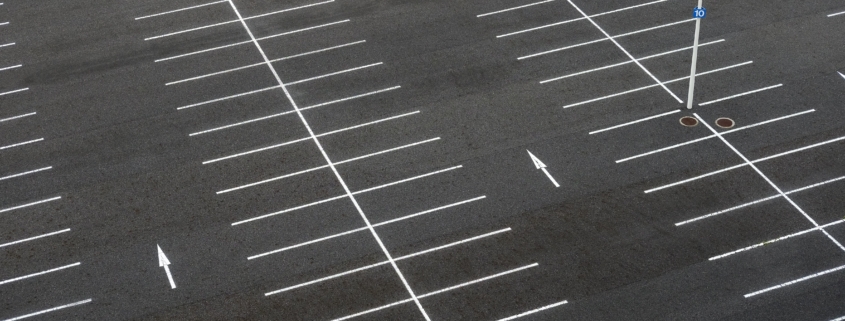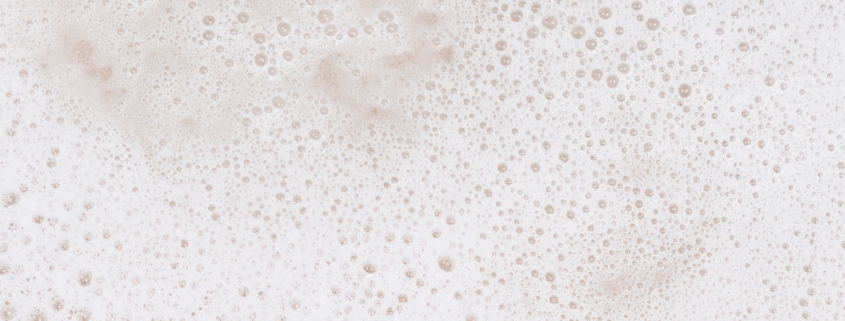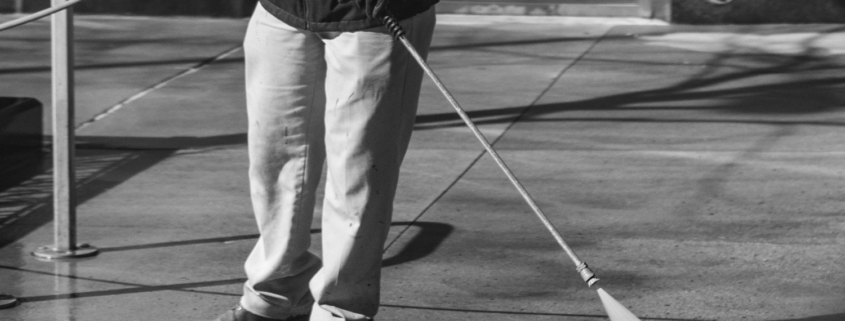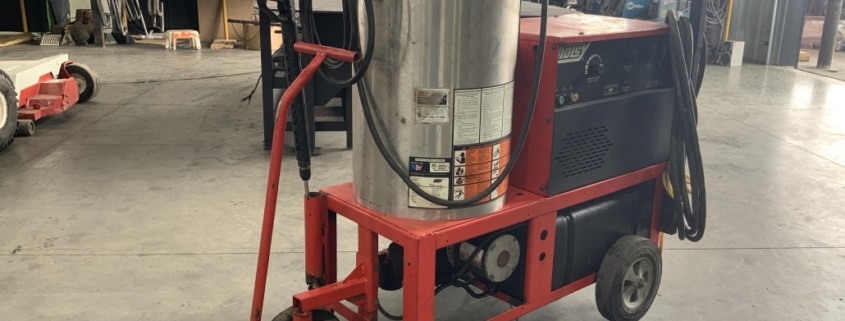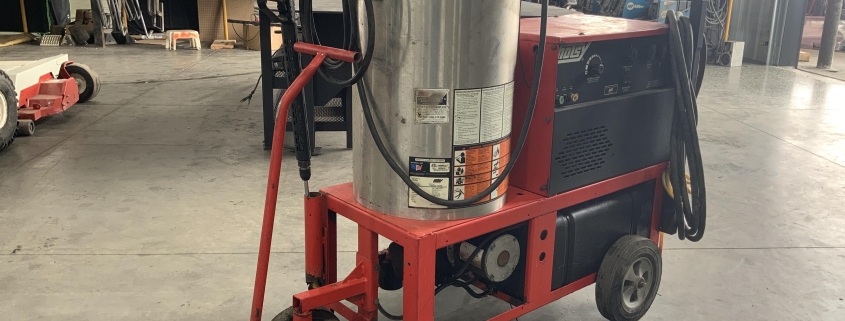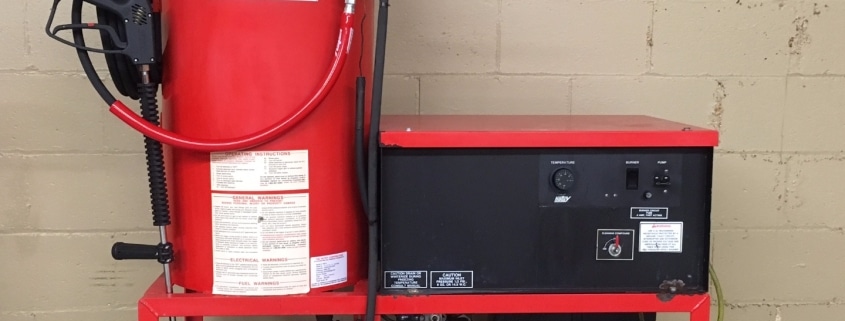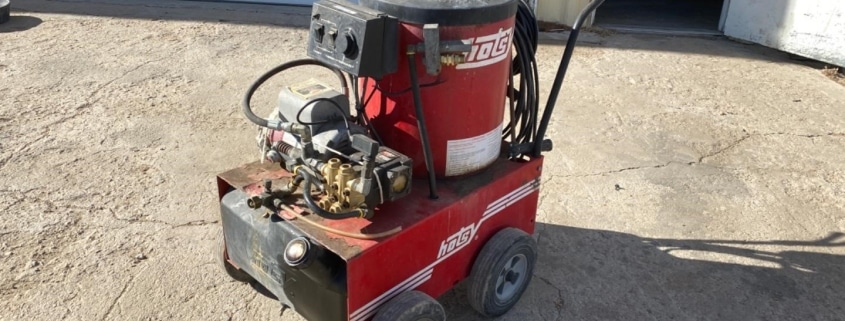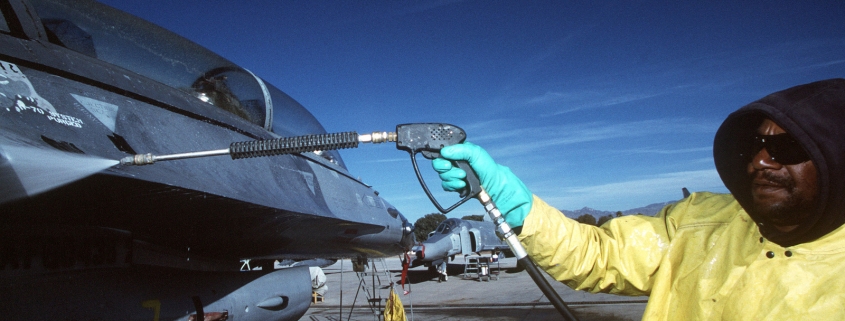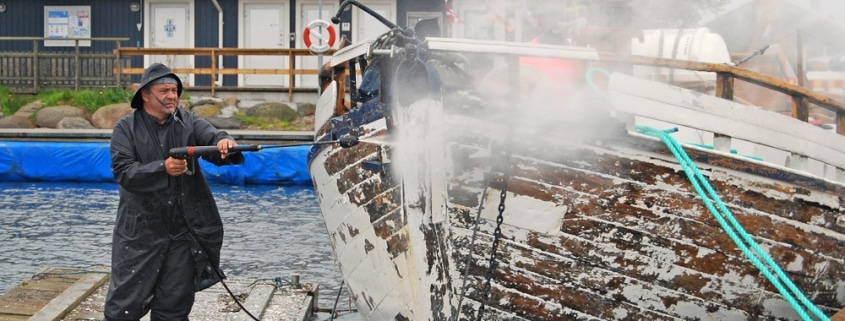Want to learn all about commercial building pressure washing? You’ve come to the right place. In this in-depth guide, we’ll answer all your questions about pressure washing commercial buildings.
Maybe you’re the proud owner or property manager of an industrial building. Or, perhaps you’re starting a pressure washing business and want to target building owners yourself. No matter the circumstances you came here under, one thing is certain: by the end of this discussion, you’ll feel confident in taking your next steps to pressure wash the exterior of a commercial building!
This article will explain the benefits of pressure washing your building’s exterior. And, we’ll cover what to use when pressure washing exterior commercial buildings. Of course, you’ll also gain insights on how to actually pressure wash commercial buildings – step by step. We’ve got a lot to cover and recognize how valuable your time is, so let’s get right into it!
Benefits of Commercial Building Pressure Washing
Before we get into the nitty-gritty of commercial building pressure washing, let’s first look at some of the benefits. After all, you may be wondering: is pressure washing commercial buildings worth it?
Trust us – it’s worth it. And frankly, you don’t even have to take our word for it. There’s a reason commercial building owners make pressure washing a regular part of their maintenance schedule. Here are a few of the most noteworthy benefits you’ll unlock by doing the same:
- Pressure washing can extend the lifespan of your building. By regularly removing dirt, grime, and other buildup from your building’s exterior, you’re essentially protecting it from wear and tear. This will help you avoid costly repairs down the line! From extending the life of your building’s paint to the actual material making up the exterior walls, professional cleaning is a great investment in the building itself.
- Pressure washing can improve your business’s curb appeal. First impressions matter – and if potential customers or clients see a dirty, neglected building, they may not have the best impression of your business. On the other hand, a clean and well-maintained building will convey that you take pride in your business – and may even attract more customers!
- Pressure washing can increase property value. If you’re thinking of selling your commercial building, pressure washing it first can definitely increase its resale value. And, think back to that first point we mentioned. If you routinely clean the exterior of your building, it will command a higher price point when it comes to selling the property.
These are just a few benefits of commercial building pressure washing – but we think they’re compelling enough to warrant further investigation! Now that you’re convinced, the question becomes – should you pressure wash the building yourself or hire a company to do it for you?
Should You Pressure Wash Your Commercial Building Yourself or Hire a Company to do it?
There are two ways you can get your commercial building pressure washed:
- Use internal resources to get it done
- Outsource the work to a pressure washing company
Of course, each approach has its own pros and cons. If you do the work yourself, you’ll have to either rent or buy a pressure washer and other supplies. This does require an upfront investment, but you save much more money in the long run than paying for costly professional services.
However tempting it may be to leverage the help of a professional so you can just keep it out of sight, out of mind, it usually makes more sense to do it yourself. You won’t have to deal with the hassle of scheduling appointments, and you can make sure the job is being done exactly how you want it done. But the real kicker is the cost savings in the long run.
Let’s move on to what materials you’ll need for the job.
What to Use When Pressure Washing the Exterior of Commercial Buildings
Now that we’ve gone over some reasons why pressure washing commercial buildings is important, let’s talk about what to use when pressure washing the exterior of commercial buildings.
As you can imagine you’ll need the best commercial pressure washer and the best pressure washing soap. Add an operator (or a few operators depending on building size), and you have a superpowered cleaning solution that can blast through the toughest dirt, dust, and grime. Even the dirtiest commercial building exterior is no match for this tandem.
The key here is that you need to carefully consider your unique building when choosing your equipment and supplies. Our buying guides (linked above) are great resources to help you pick the right pressure washer and soap. But if you want an expert recommendation, we’re here to help.
Trust the Experts at Hotsy for All Your Commercial Building Pressure Washing Essentials!
Hotsy is the #1 choice for all things pressure washing in South Texas – serving San Antonio, Laredo, Houston, and the Rio Grande Valley. With over 40 years of experience, you can trust that we’ll get you set up with everything you need for effective, efficient cleaning. Nothing cleans like a Hotsy! We have a reputation for producing dependable, long-lasting equipment. You can enjoy peace of mind investing in our machinery knowing you’ll get your money’s worth. Our pressure washers are built to stand the test of time.
Now – to get specific, what type of unit and soap do we recommend for commercial building exterior pressure washing? Stick with one of our commercial hot water pressure washers. You can buy one if you plan on using it a few times or more a year. Otherwise, our hot water pressure washer rental service may make more sense for you.
Then, you’ll pair the unit with one of our powerful pressure washer degreaser soaps. You will get impressive results with our Blue Thunder detergent in particular – it’s perfect for brick or steel building exteriors! However, there are many detergents that will get the job done: Breakthrough, Super X, Ripper I, and Enviro-Clean are other candidates.
When Should Commercial Building Pressure Washing be Done?
We recommend developing a commercial building pressure washing schedule based on your unique location and circumstances. The reality is, no two buildings are the same – but here are some considerations to help you come up with a schedule:
- Consider Seasonality: anytime the seasons change, it creates a great opportunity to clean your building. Not only is it a good way to maintain a “once a quarter” cleaning schedule. But, your building will actually become dirtier with the changing of seasons. Pollen starts flying in the spring and summer, rain and snow muck up the building during winter, and leaves and other debris accumulate during fall.
- The Eye Test Never Fails: cleaning your commercial building’s exterior once a quarter is plenty for businesses situated in mild climates and clean areas. But, maybe your location is particularly dry and dusty. Or perhaps your commercial building is near a processing plant that affects air quality. There are countless reasons your commercial building may need to have the exterior cleaning more frequently – so, just be sure to analyze the exterior every month or so. As you notice it becoming dirtier, you can schedule a cleaning.
How to Pressure Wash Commercial Buildings: Step by Step Guide
Now that you know what to use when pressure washing exterior buildings, it’s time to roll up your sleeves and get to work. We’re going to help you navigate this process with a step-by-step guide on how to pressure wash commercial buildings.
If you have no prior experience operating a pressure washer, start by reading some of our resources. Our guide on how to start a power washer is a great entry point. Then, read our guide discussing safety. This will help you eliminate all the potential pressure washer accidents that could occur through proper protocols, PPE, and other measures. Finally, our resource on how to use a pressure washer covers the basics you need to know along with advanced pressure washing techniques for more effective, efficient cleaning.
With all that said, here is how to actually get started pressure washing commercial buildings. The process is broken down into three key steps:
Step 1) Preparation
– Assess the commercial building and create a game plan. You’ll want to take note of the areas that are particularly dirty or challenging. Then, you’ll develop a strategy for how you will approach pressure washing the exterior. This will also help you identify precisely what detergent you’ll need. For example – if you find some graffiti, you can grab a bit of our Fat Cap Graffiti Remover.
– Next, set up your pressure washing equipment. This includes unloading the pressure washer from the truck, connecting all hoses and cords, adding soap to the unit, and testing everything out to ensure it’s working properly. Read our guide on using soap with a pressure washer if you’re unsure how to add/mix it.
– Finally, do a walkthrough of the commercial building with the owner or manager. Point out any areas of concern and get approval to move forward with pressure washing. You may need to board up/cover windows or signs that you don’t want to risk damaging (especially with high pressure washer PSI).
Step 2) Cleaning
– Begin pressure washing the commercial building starting from the top and working your way down. If you’re using a hot water pressure washer, be careful of any areas that may be susceptible to heat damage.
– As you work, pay close attention to any problem areas. These will likely require more time and effort to get clean.
– Make sure you move slowly and evenly across the surface as you pressure wash. This will help ensure you don’t miss any spots and that the cleaning is even throughout.
-You may need to rinse with pure water after an initial detergent pass. Don’t leave suds behind – and don’t let them dry on the walls while you’re cleaning the exterior of the building either. This will leave a film behind.
Step 3) Post-Cleaning
– Once you’re finished pressure washing, it’s time to do a walkthrough. If you were contracted by a building owner to do the cleaning, you’ll want to make sure they’re present for the walkthrough – just as they were for the assessment. This time, you’ll point out all the areas that have been cleaned and any areas that may still need attention.
– Then, you’ll pack up your pressure washing equipment and load it back into the truck. Make sure everything is turned off and disconnected properly before leaving the job site.
– Finally, if you were contracted by a building owner, touch base with them a few weeks after the fact to schedule a follow-up appointment to assess the results of the pressure washing and determine if any additional work needs to be done.
Final Thoughts on Pressure Washing Commercial Buildings
That concludes our complete guide to pressure washing commercial buildings. Investing in a pressure washer for your commercial building is a smart move for any business owner or manager. Not only will it improve the appearance of your property – but, it will also extend its lifespan. With Hotsy by your side, you can rest assured you’re getting the best possible results.
And now that you know how to pressure wash commercial buildings, there’s only one thing left to do. Head to your local Hotsy Equipment retailer and experience how simple and effortless industrial cleaning jobs can be! Our commercial pressure washer store in San Antonio has everything you need to transform your building’s exterior and restore it to a like-new condition.


